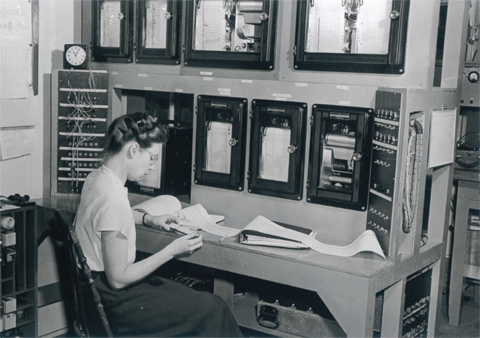 |
 |
|
June 10, 2021 Gladys Harvey: The Woman Who Listened to the Stars by Heather Harvey and Jaellayna Palmer Men must use their influence … to promote the systematic inclusion of women, not out of condescension or presumed self-sacrifice but out of the belief that the contributions of women are required for society to progress. (Bahá’í International Community)  Gladys Harvey (1916-1995), one of the first Bahá’ís in the Ottawa community, was also the first female radio astronomer in Canada. Born in Aldershot, Ontario, Gladys was raised by her paternal grandmother and father in an ivy-covered Edwardian house. When she was 15 her grandmother died, so Gladys joined her mother in the larger city of Hamilton. A gifted student, Gladys completed high school that year, and at 16 began her studies of mathematics and physics at McMaster University, graduating with a master’s in mathematics before she turned 21, quite a feat at that time. She continued her education at Toronto’s Ontario Institute for the Study of Education, which led to teaching high school art and mathematics in the small town of Leamington, Ontario. She also worked as an inspector in a war plant and tutored returning soldiers. In 1948, Gladys began work as a research officer in radio astronomy with the National Research Council in Ottawa. At that time the field was in its infancy, so there were no specific courses or credentials leading to this work. With her bachelor’s degree in physics and mathematics and a master’s in mathematics, she was nevertheless well-qualified. Gladys worked for the Dominion Radio Astrophysical Observatory of the Canadian National Research Council in Ottawa from 1948 to 1976 and then briefly for the Herzberg Institute of Astrophysics (today known as the Herzberg Astronomy and Astrophysics Research Centre) before retiring. She had a number of research interests, including observing solar radio emissions, astrophysical measurements of the brightness of specific radio emissions – especially bursts that coincided with solar flares – as well as radio emissions from distant galaxies. For the first 21 years of her career, she worked mainly at the Goth Hill Observatory in Ottawa, and then became affiliated with the observatory in Algonquin Park, northeast of Ottawa. From time to time, she travelled to a number of American and British telescope installations to take observations and work with other scientists.
|
|
|